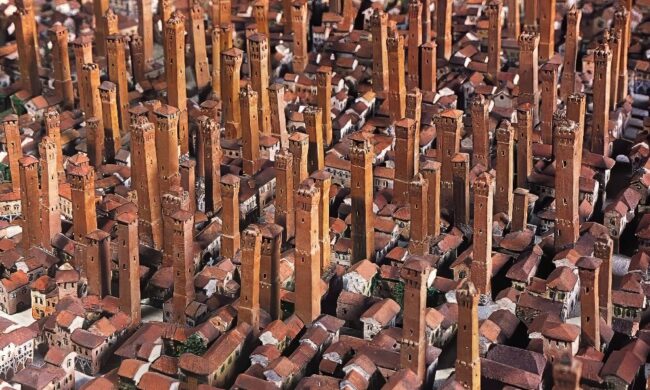Between the 12th and 13th centuries, Bologna was densely packed with tall, defensive stone towers, some reaching up to 97 meters.
These towers were complemented by fortified gateways known as torresotti, remnants of the city’s 12th-century walls, which have mostly vanished. Constructing a tower, even with serf labor, was a slow process, often taking three to ten years for a 60-meter structure.
h/t: vintag.es
Each tower featured deep square foundations reinforced with poles, and their walls were built using “a sacco” masonry, with a thick inner layer and a thinner outer shell filled with stones and mortar. Openings were intentionally left in the walls to support scaffolding and future wooden additions.
The sheer number of towers once crowding Bologna has long been debated, with early estimates suggesting up to 180. This figure came from Count Giovanni Gozzadini, a 19th-century historian who analyzed civic archives to elevate Bologna’s historical prestige. Later scholars questioned his methods, noting that duplicate references in legal documents may have inflated the count, revising the total to between 80 and 100 towers.
The exact reasons for building so many towers remain unclear, though some believe wealthy families used them for defense during political conflicts like the Investiture Controversy. Today, fewer than twenty towers survive, including the iconic Asinelli and Garisenda Towers, enduring symbols of Bologna’s medieval skyline.

